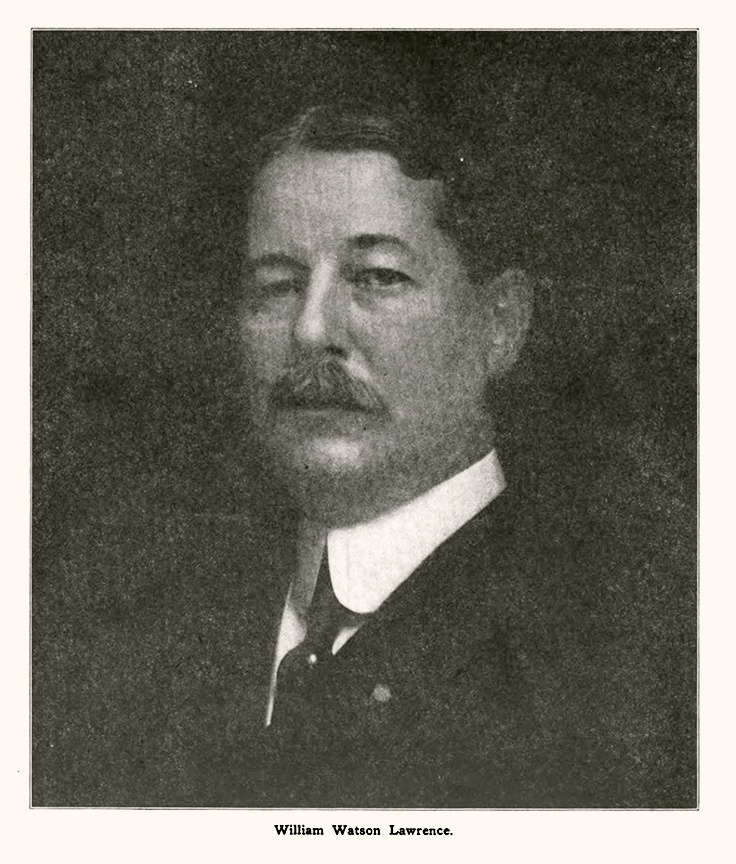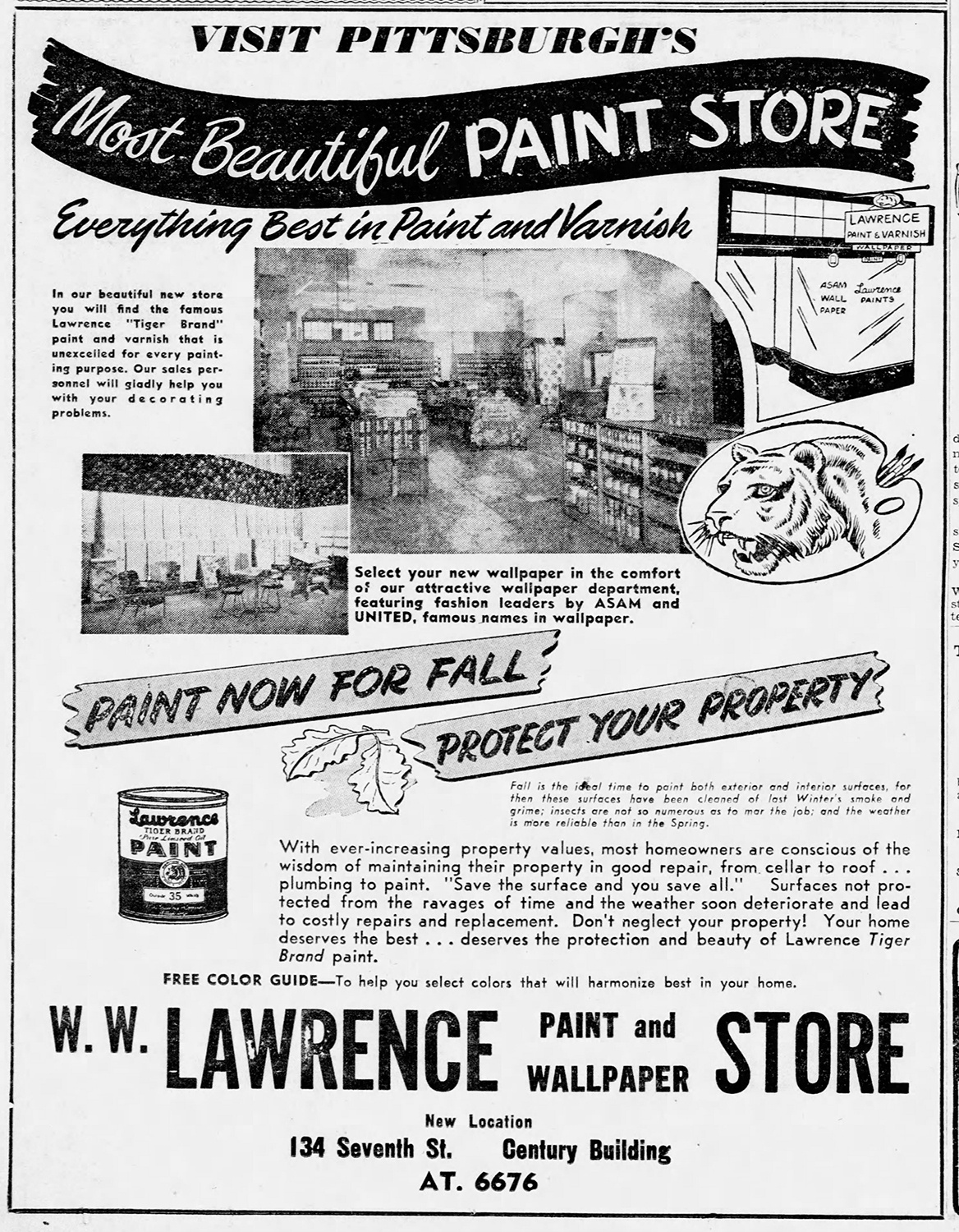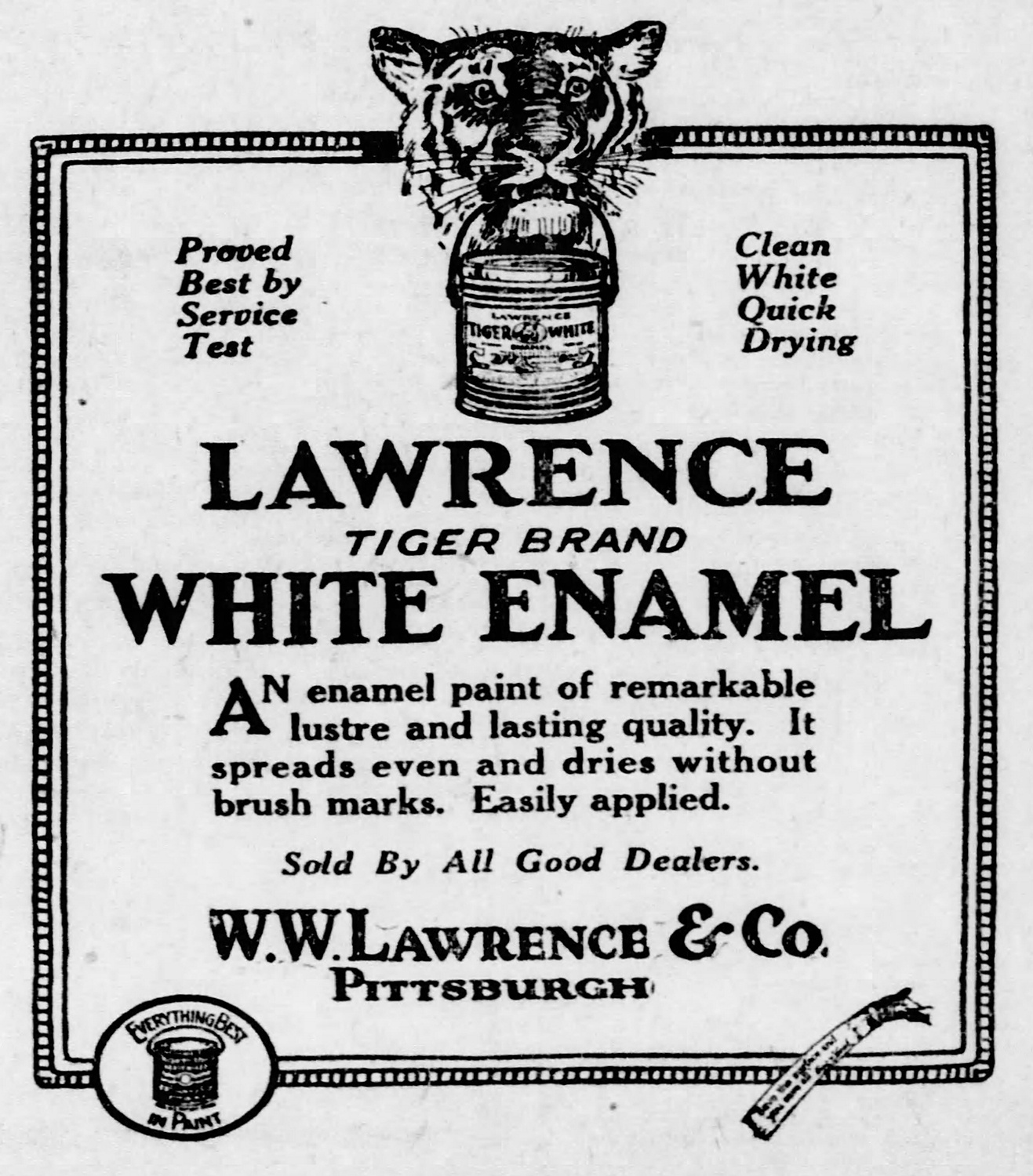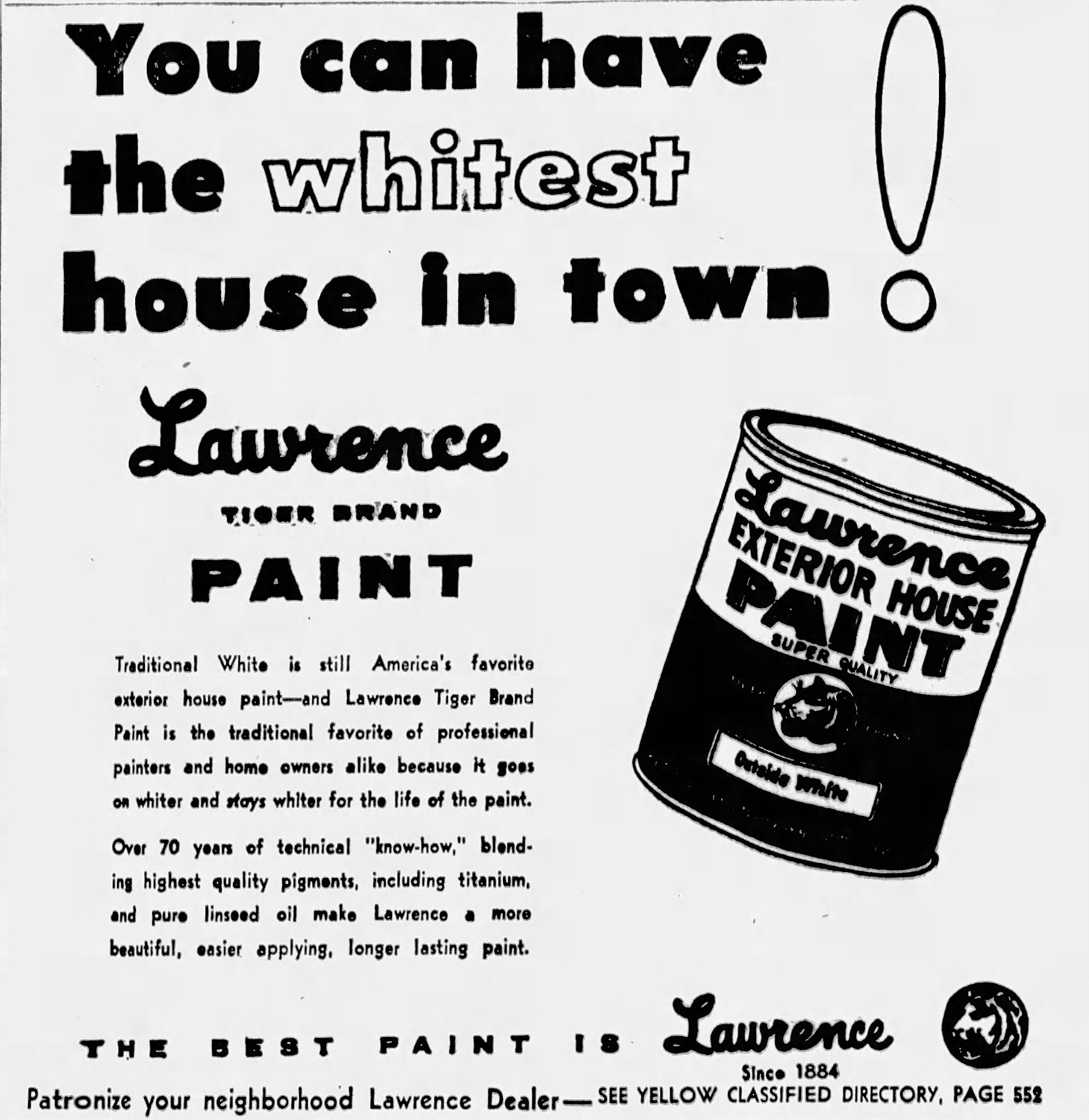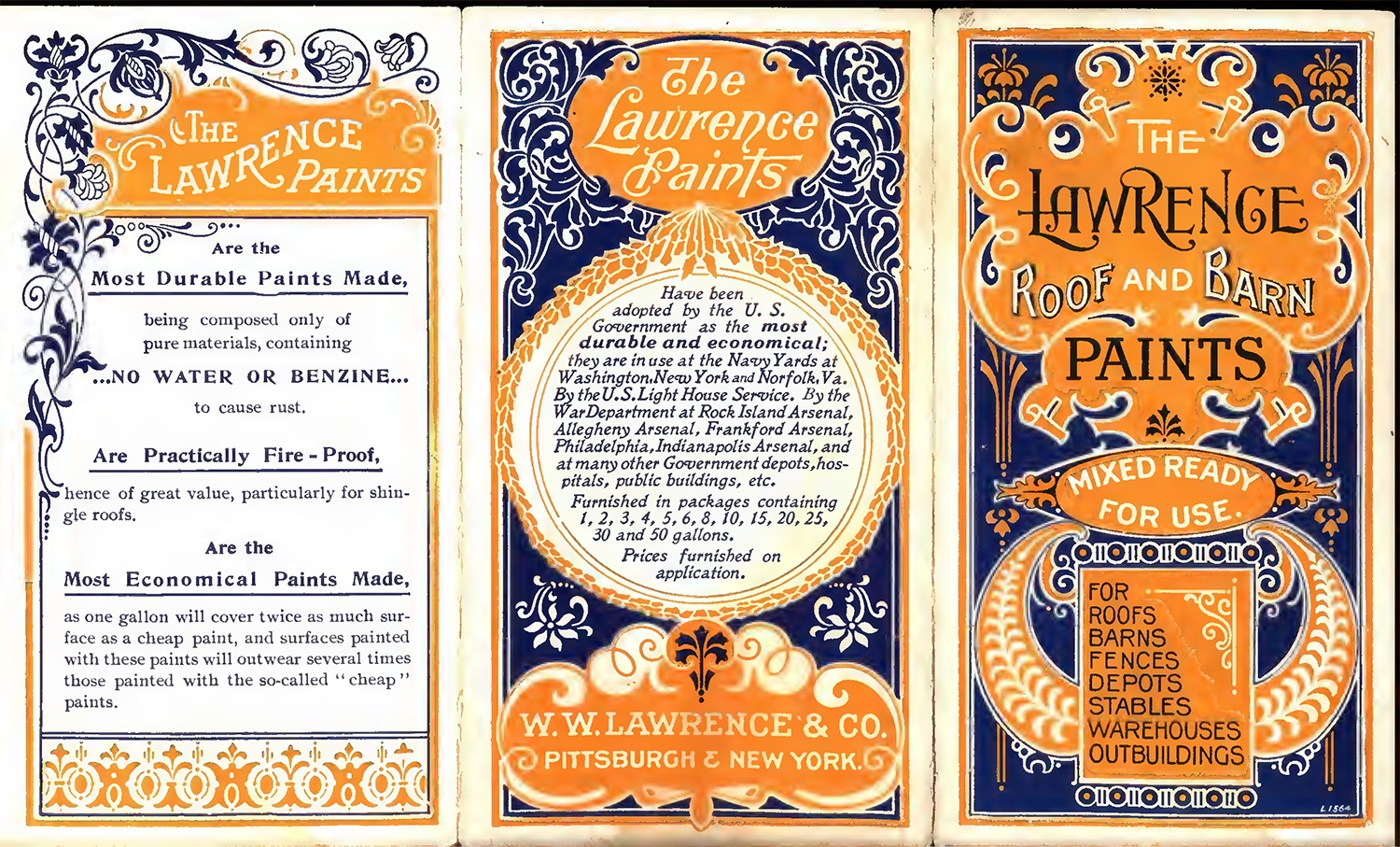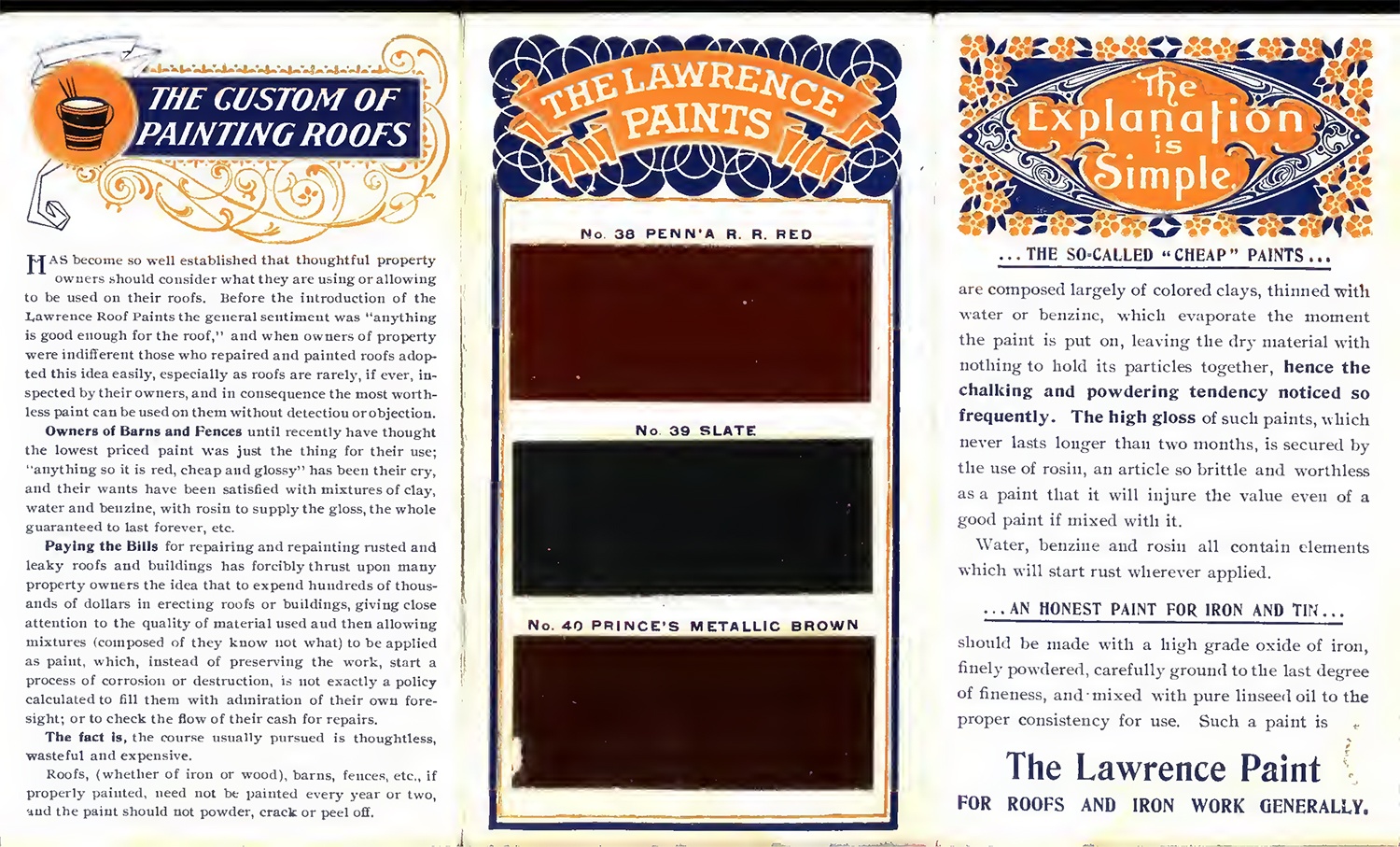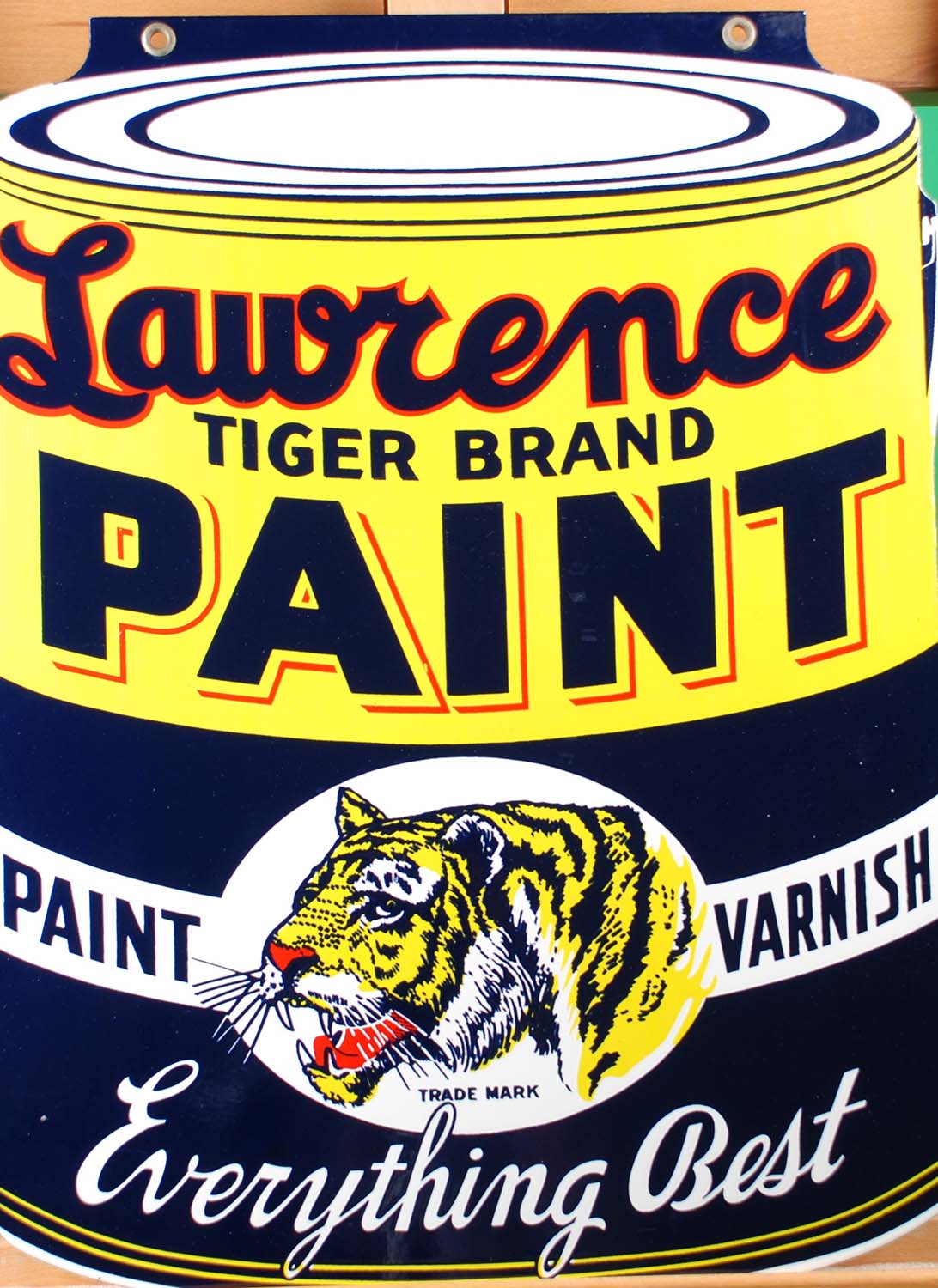
A tiger is a powerful, beautiful animal that is easy to remember, which was perhaps the intent behind the striking advertisement designs for Lawrence Tiger Brand paint made in Pittsburgh. This summer, you may be working on exterior home improvement projects to get ready for the colder months ahead but let’s remember a local paint manufacturer that helped people do the same type of work with quality products beginning in the late 19th century.
W.W. Lawrence & Company was founded by William Watson Lawrence in 1884. The company manufactured and sold both commercial and residential paints of superior quality and durability. As business increased, he built a large factory in 1902 at the base of the Duquesne Incline in the South Side. Lawrence held the integrity of his business in high regard and advocated for honest labeling on all his products. Unlike cheaper brands on the market, Lawrence paints did not contain quick-drying thinners like water or benzene which added to his product’s durability.[1]
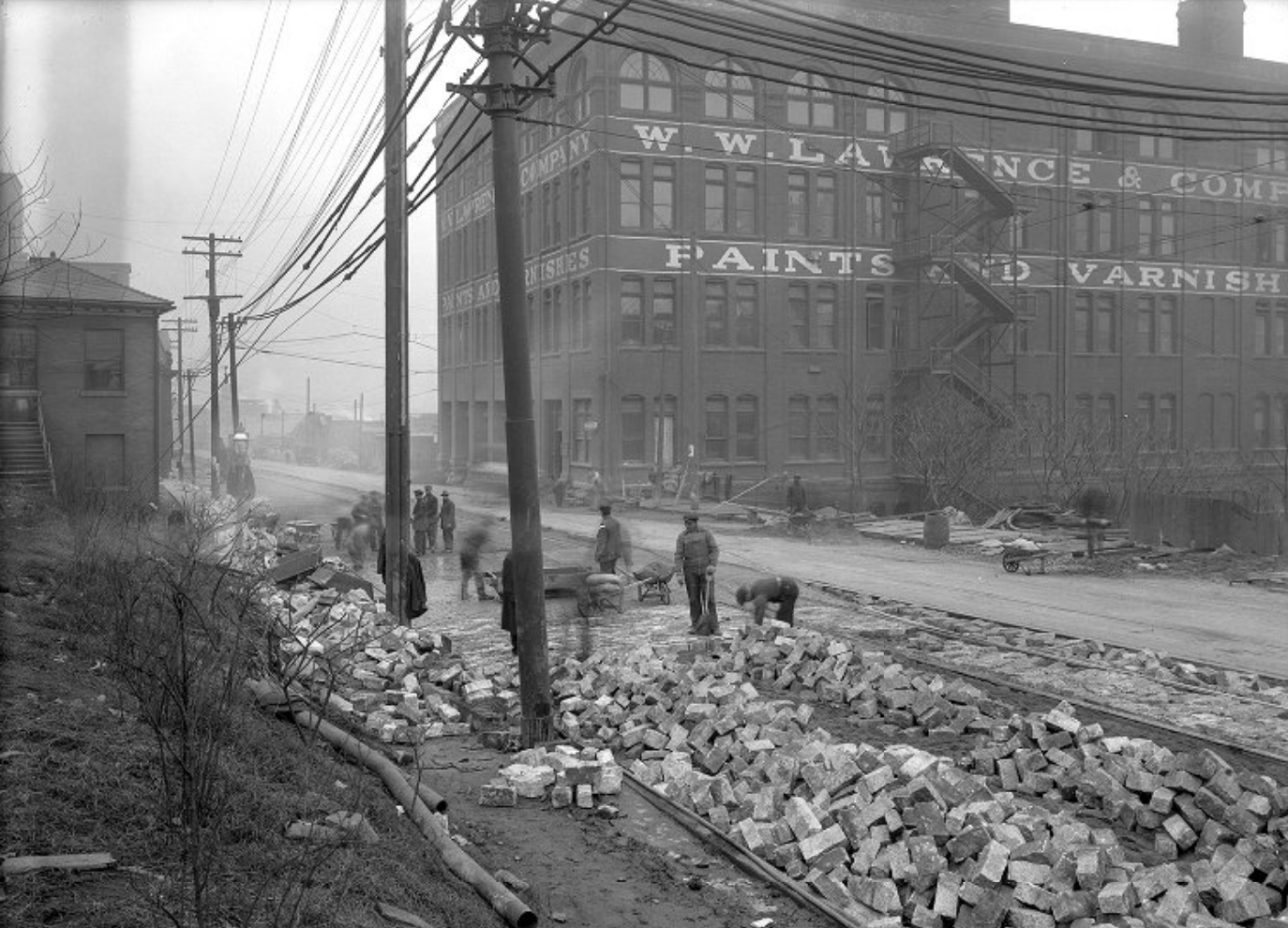
One of the most notable contracts the company fulfilled originated in 1893 when the U.S. government requested 10,000 gallons of Lawrence paint to coat lighthouses and government buildings along the entire Atlantic coast.[2] The paint brand was even in use at the Allegheny Arsenal and, if the paint was durable enough for the smoky city of Pittsburgh, then it could also meet the challenge of protecting structures against costal winds and salty air.[3]
W.W. Lawrence & Company ceased operation in 1973 and, at one time, the History Center considered the manufacturing building as a possible site for its museum before settling on the current Strip District location. After sitting vacant for over 30 years and suffering the ill-effects of a damaged roof, the building was torn down in June 2001.[4]
[1] Paint, Oil and Drug Review, vol. 62, no. 1, (Chicago: D. Van Ness Publishing Company, 1916) p. 11.
[2] Railway Locomotives and Cars, vol. 67, no. 1 (Bristol, Conn.: Simmons-Boardman Pub. Corp., 1832) p. 46-47.
[3] The Lawrence Roof and Barn Paints pamphlet.
[4] “2 Lawrence buildings start falling,” Pittsburgh Post-Gazette, June 12, 2001.
Liz Simpson is assistant registrar at the History Center and assistant editor for Western Pennsylvania History Magazine.
